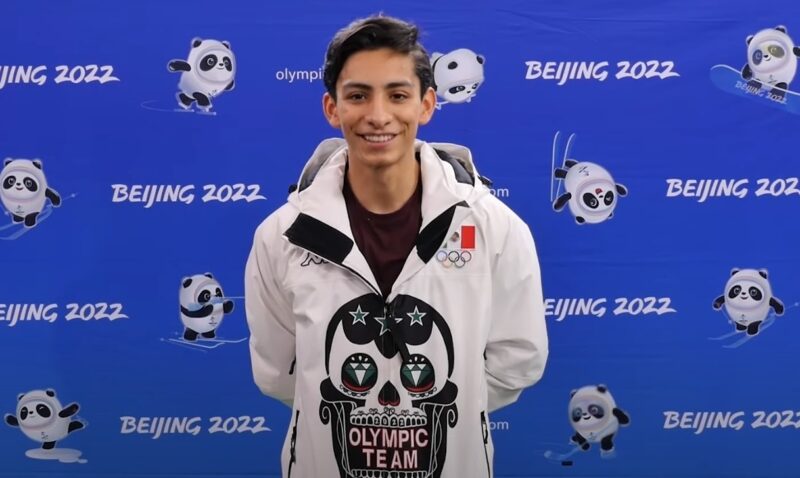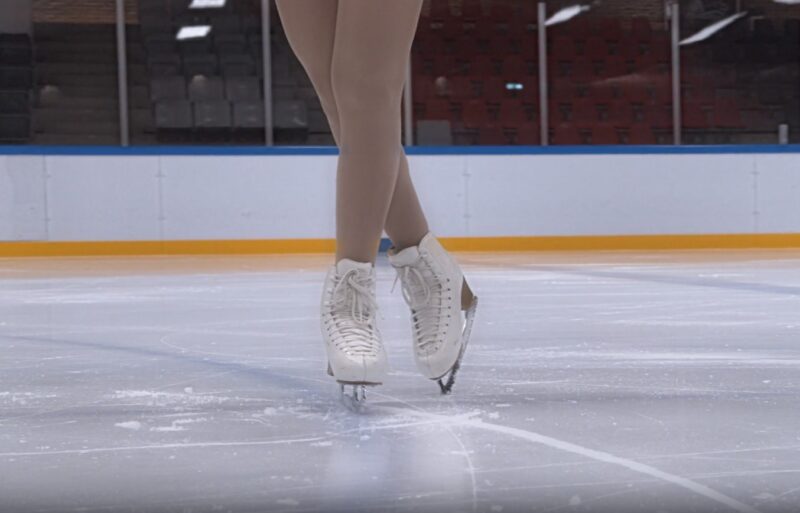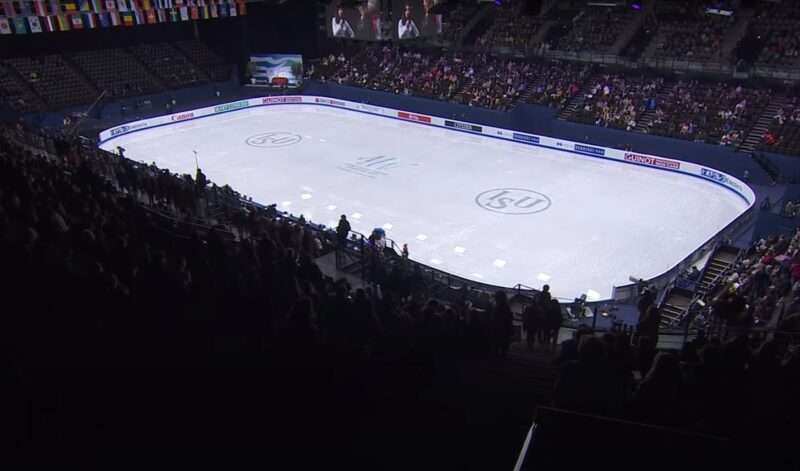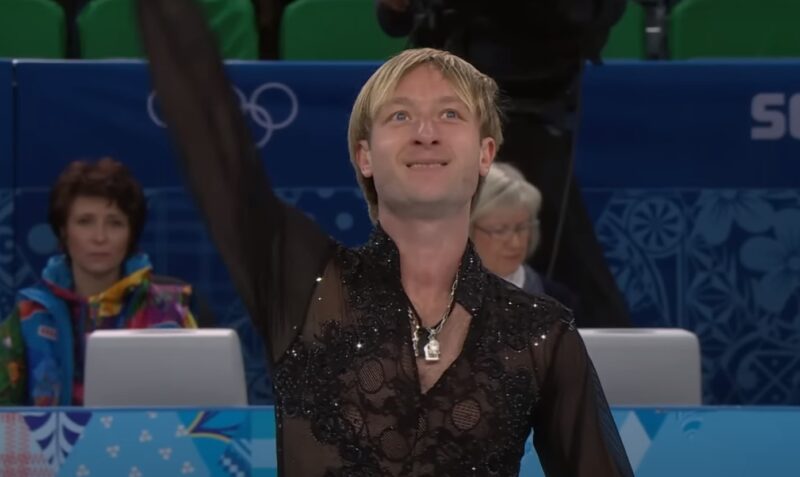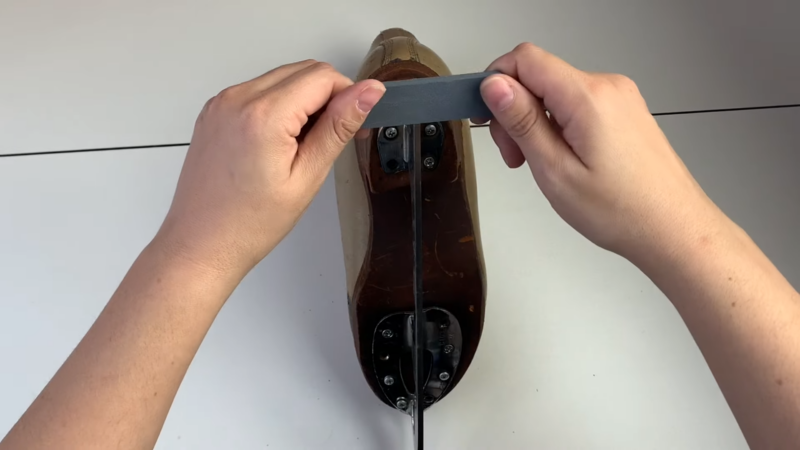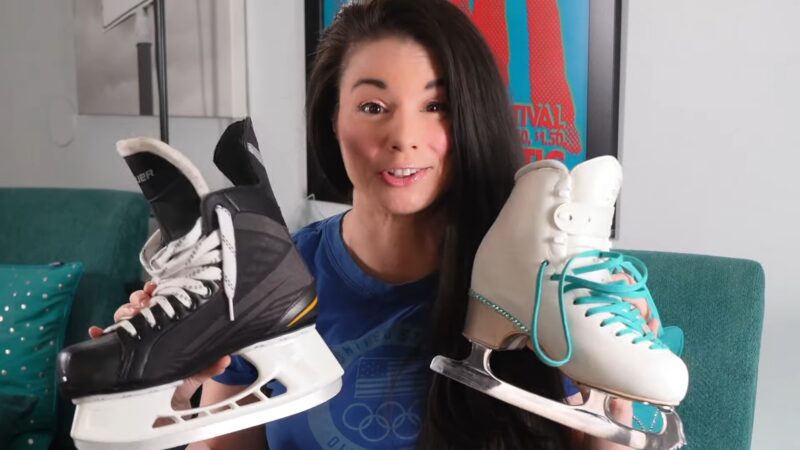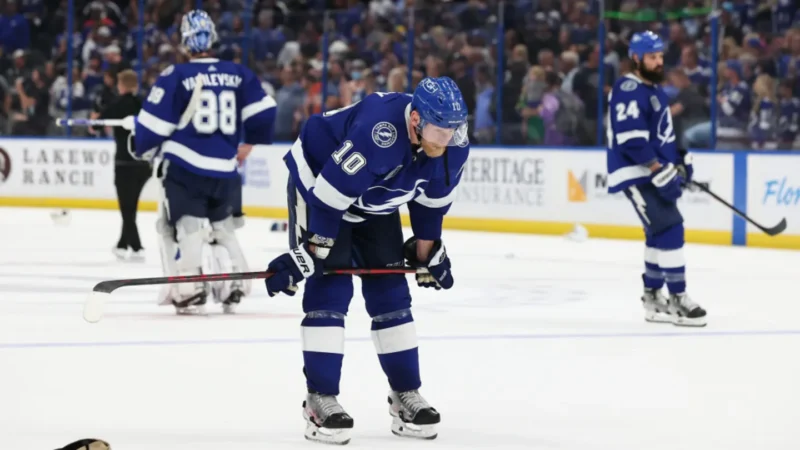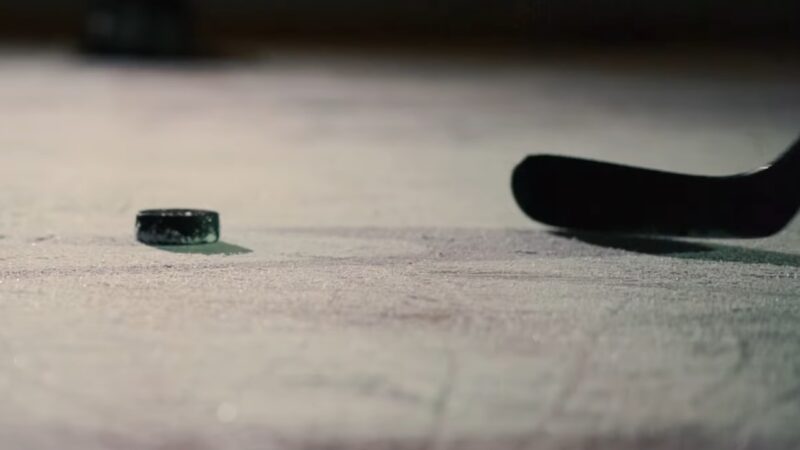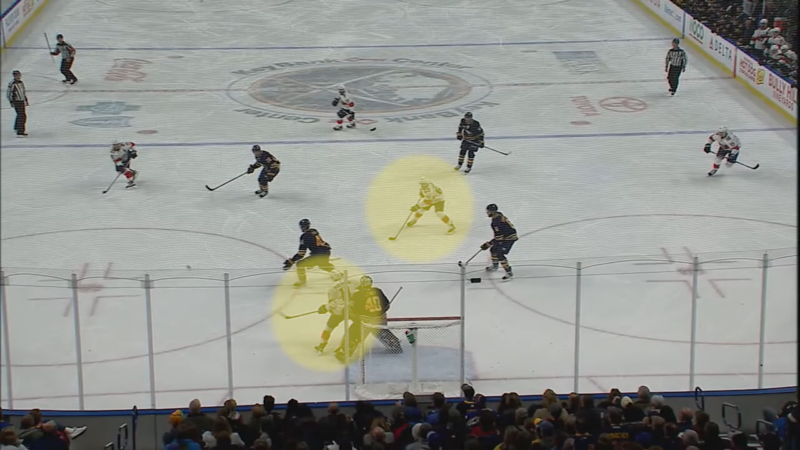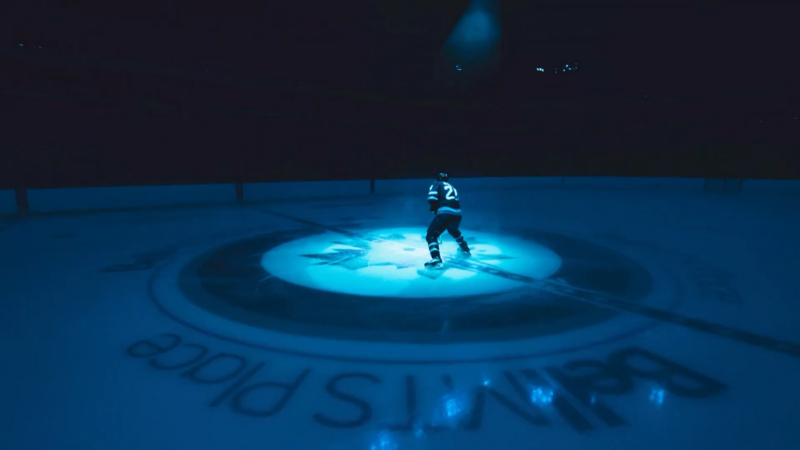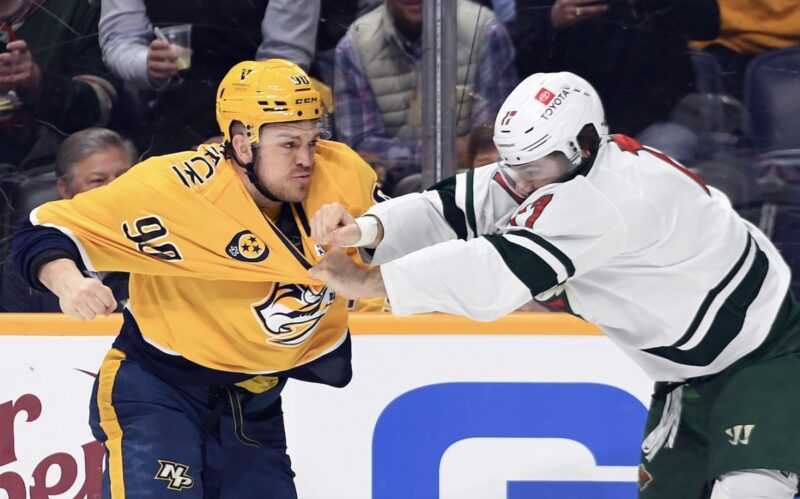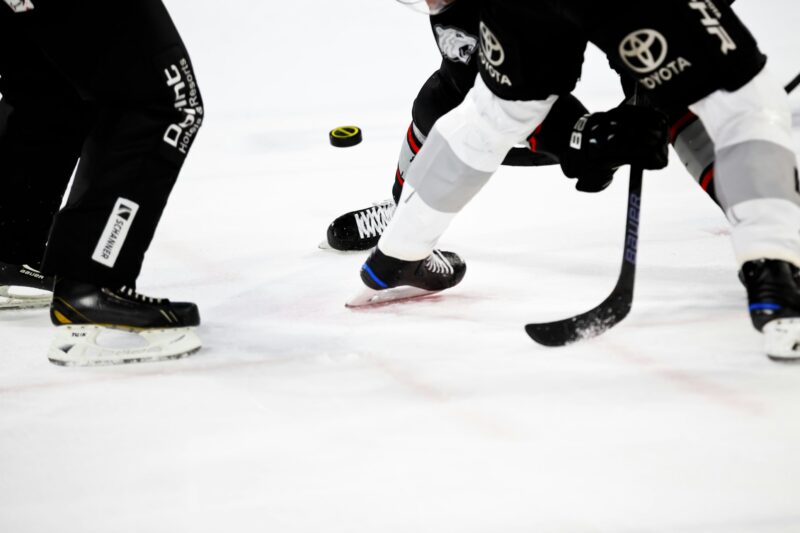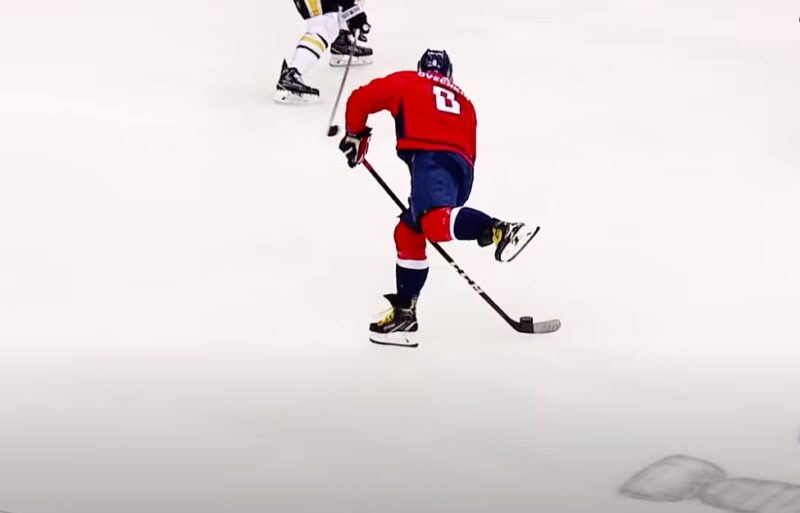
Ever found yourself watching a game, seeing a player smack the puck into the net so smoothly off a pass, and thought, “Wow, what a shot!”? That, my friends, is the legendary one-timer, a shot that turns heads, gets fans out of their seats, and, let’s be honest, makes goalies sweat a little more than usual.
But what exactly is a one-timer, and why is it such a big deal in hockey? Let’s break it down and get into the nuts and bolts of one of the most electrifying shots in the game.
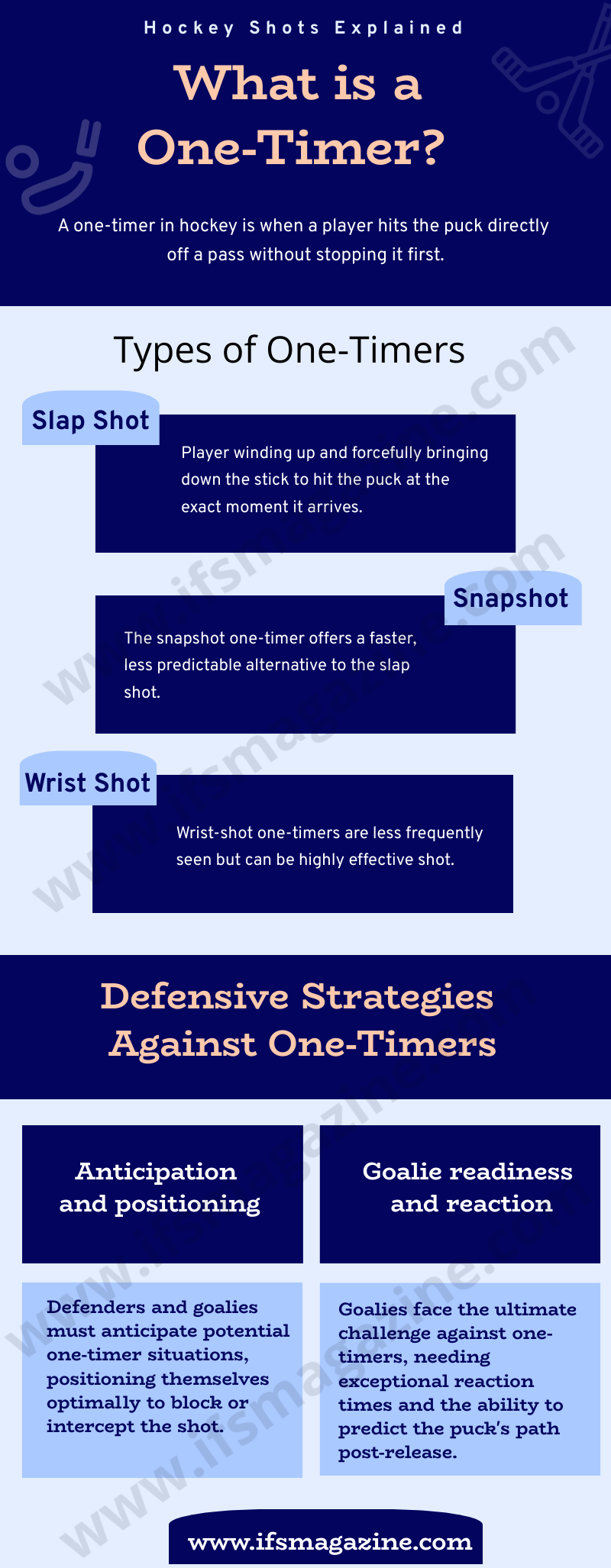
Defining the One-Timer
A one-timer in hockey is when a player hits the puck directly off a pass without stopping it first. This shot is typically a slapshot, known for its speed and power, making it a formidable tool in a player’s arsenal. The effectiveness of a one-timer lies in its surprise element and the difficulty goalies have in anticipating the puck’s trajectory.
Execution and Timing of The Shot
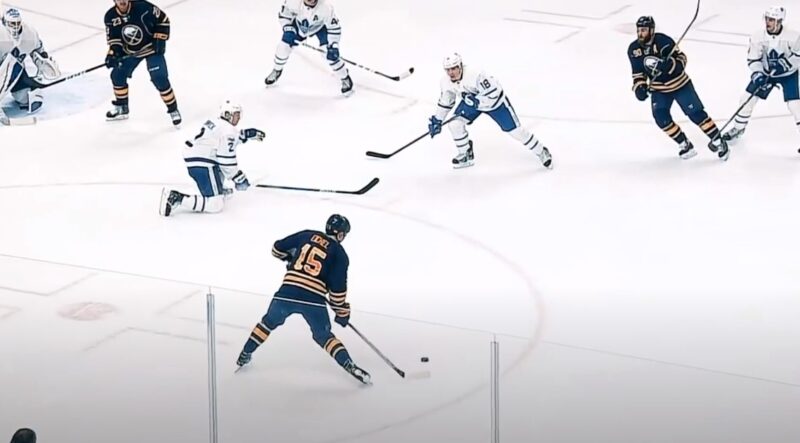
The execution of a one-timer in hockey is a critical skill that demands both precision and speed from the player. In this maneuver, the player must hit the puck directly from a pass without taking the time to stop or control it first. This requires an exceptional level of coordination between the player receiving the pass and the player delivering it.
The timing of the shot is crucial; the player must accurately anticipate the arrival of the puck and time their swing so that the stick meets the puck at the exact right moment for optimal power and direction.
The player must maintain a proper stance and balance to effectively transfer energy through the puck, aiming to outmaneuver the goalie and defenders. Successful execution of a one-timer not only showcases a player’s skill and teamwork but also significantly increases the chance of scoring due to the speed and unpredictability of the shot.
Types of One-Timers
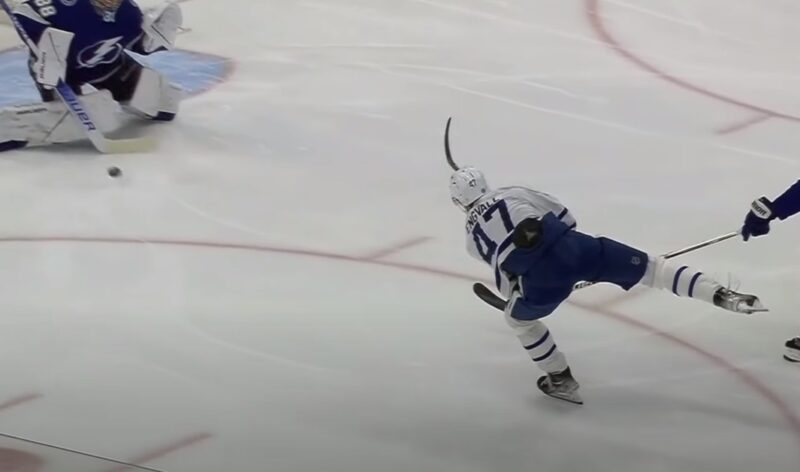
1. Slap Shot
The slap shot one-timer is a powerful and common technique in hockey, characterized by a player winding up and forcefully bringing down the stick to hit the puck at the exact moment it arrives. This shot demands precise timing and coordination, resulting in a high-velocity and hard-to-predict goal that challenges even the most skilled goalies.
2. Snapshot
The snapshot one-timer offers a faster, less predictable alternative to the slap shot, making it less noticeable to opponents but generally delivering less power. This technique is particularly effective in limited space, allowing players to swiftly execute shots without the need for a large wind-up.
Its quick release time is key to catching goalies off-guard, contributing to unexpected goals and dynamic play.
3. Wrist Shot
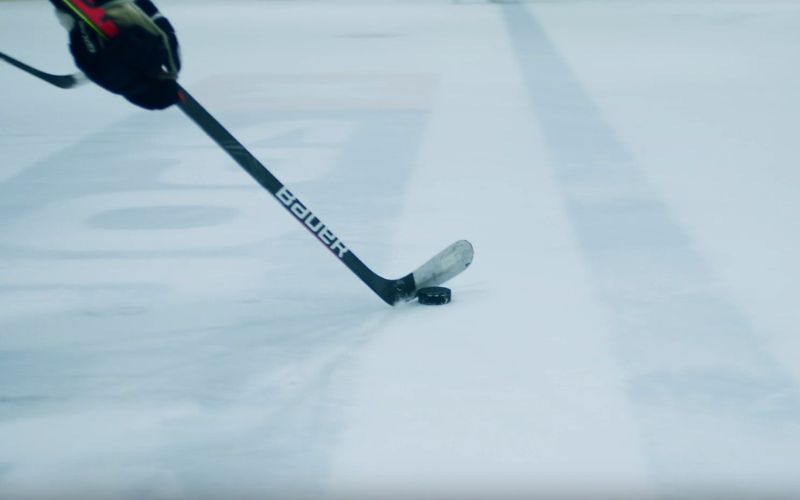
Wrist-shot one-timers are less frequently seen but can be highly effective, involving a player quickly flicking the puck using a swift motion of the wrists immediately after receiving a pass. This technique focuses less on generating power and more on precise placement and the element of deception, aiming to outsmart the goalie.
The subtlety and quick execution of wrist shots make them valuable tools for players looking to score in tightly defended situations.
The Role of The Assisting Player
The passer must have an acute awareness of the game, particularly the shooter’s position and readiness to receive the puck. The timing of the pass is critical; it must be delivered at the precise moment when the shooter is adequately positioned and ready to execute the shot, ensuring that the puck meets the stick at the optimal angle and moment.
The pass must be precise, aimed directly at the shooter’s sweet spot to allow for a fluid and forceful connection with the puck. It should be fast enough to catch the defense off guard, yet controlled enough to ensure that the shooter can effectively connect with the puck without needing to adjust their stance significantly.
This balance between speed and control is essential for setting up the one-timer, as it impacts the shooter’s ability to time their shot accurately and direct the puck toward the intended target.
The assisting player’s ability to consistently deliver such passes can dramatically enhance the effectiveness of one-timers, making them a potent weapon in the team’s offensive arsenal.
Defensive Strategies Against One-Timers
Defensive strategies against one-timers in hockey involve anticipating the play and positioning correctly to block the shooting lane or disrupt the passing path. Defenders must stay alert, maintain tight coverage on potential shooters, and communicate effectively to reduce the chances of a successful shot.
Therefore, the most important elements of defensive strategies are:
- Anticipation and positioning: Defenders and goalies must anticipate potential one-timer situations, positioning themselves optimally to block or intercept the shot.
- Goalie readiness and reaction: Goalies face the ultimate challenge against one-timers, needing exceptional reaction times and the ability to predict the puck’s path post-release.
Training Techniques for Perfecting the Shot
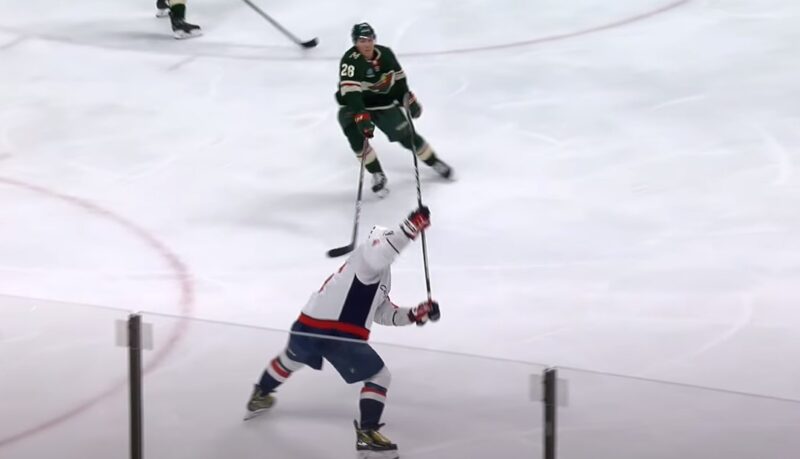
To perfect this skill, players should engage in a variety of drills that simulate game-like scenarios and require quick, precise shots following a pass. Training should start with basic passing and shooting drills to build foundational skills, gradually increasing in complexity and speed to more closely mirror game situations.
One effective training technique involves the player receiving a series of rapid passes from different angles and distances, aiming to shoot immediately upon receiving each pass. This drill helps improve the player’s ability to quickly gauge the puck’s trajectory and speed, enhancing their timing and coordination for successful one-timers.
Players should also practice with a stationary puck, focusing on their stance, swing, and follow-through to ensure they are generating the maximum power and accuracy in their shots.
Mental preparation and visualization can enhance a player’s ability to perform under pressure, enabling them to execute one-timers more confidently and successfully during critical moments in a game.
All in All…
This shot is not just about the player taking the shot; it’s a team effort that requires a blend of precision, timing, and a whole lot of skill from everyone on the ice. Next time you catch a game and see a one-timer light up the scoreboard, you’ll know exactly what went into making that moment happen.
Keep an eye out for those one-timers – they’re game-changers, literally.
Related Posts:
- Hockey Skates vs. Figure Skates - What is the Difference?
- How Long Is the Average Hockey Game? - Puck Drops,…
- What Is Offsides In Hockey And How It Is Shaping The Game?
- Why Do They Let Hockey Players Fight? Is Fighting Allowed?
- Analyzing the Impact of Analytics on Ice Hockey: A…
- The Evolution of Hockey Culture in Canada (2024)


